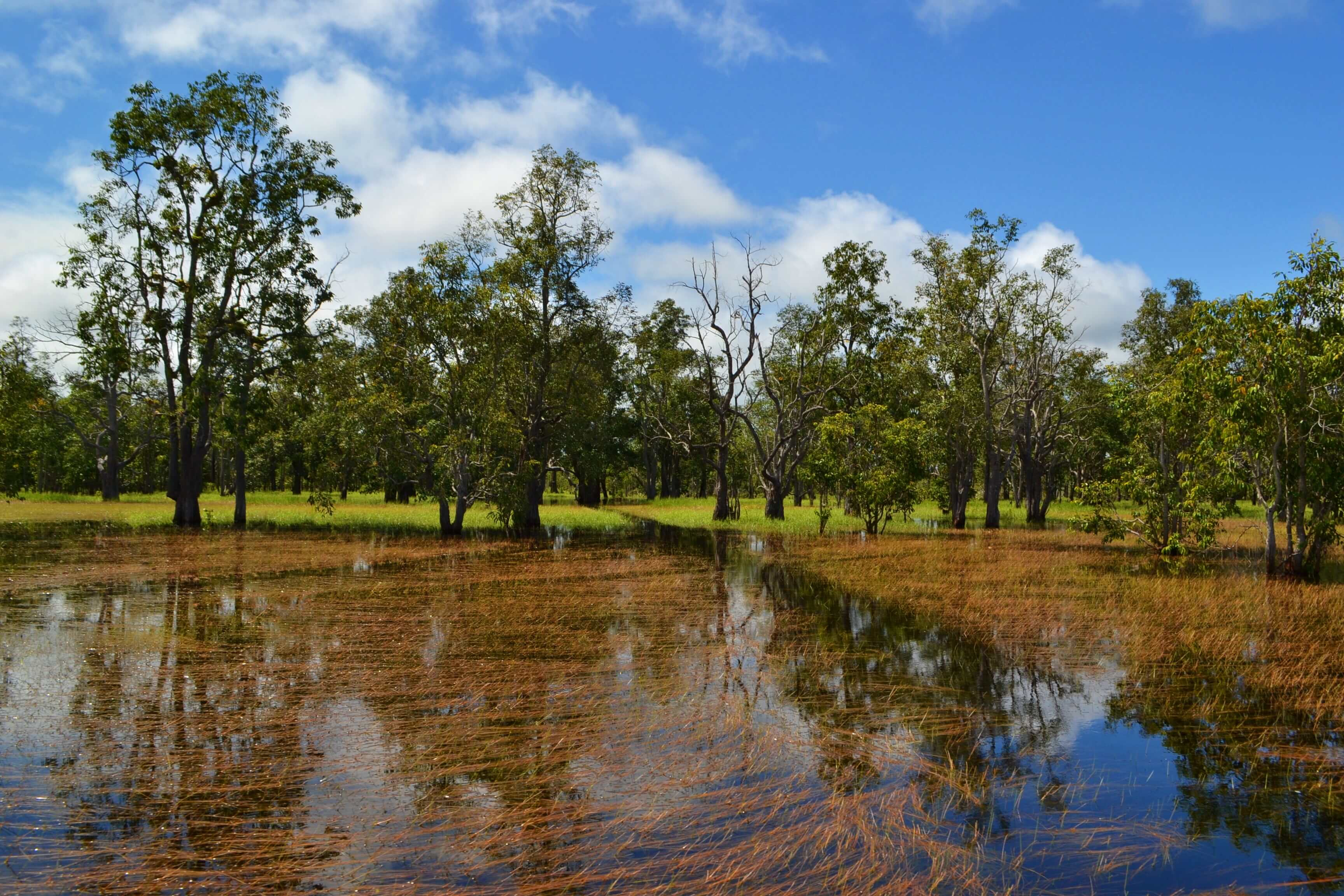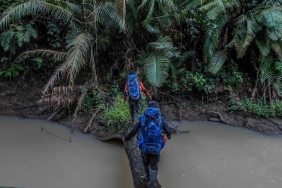TO PREVENT LAND FIRES, TOGETHER WE SAVE PEAT
Day but dark, nose and chest tightness, eyes sore, road blocked by fog; that is what was felt throughout Riau in mid-2015 until towards the end of the year, or at least early November. Students are on vacation because the air is no longer healthy, as evidenced by the air indicator installed in the middle of Pekanbaru City, the capital city of Riau Province, indicating that the air is at a dangerous level.
It doesn't stop there, Sultan Syarif Kasim II Airport, which is located in the city center, was closed for days. This makes airplane passengers from Riau have to fly from Padang, forced to take the land route for 7 hours, fishermen are forced not to go to sea. The sacrifices did not stop here. Hospitals and health care centers were flooded with people complaining of respiratory problems. And the disaster also claimed lives, 5 people were recorded as a result of the 2015 haze in Riau. This is a dark record of the haze disaster which caused casualties due to respiratory problems.
One of the locations of peatland which is quite large and often contributes to the occurrence of haze is in Riau Province, namely the Giam Siak Kecil-Bukit Batu Landscape, located in the northern part of Riau city, to be precise in Bengkalis Regency. This landscape consists of the Bukit Batu Wildlife Sanctuary, Giam Siak Kecil Wildlife Sanctuary, Production Forest with an IUPHHK-HT permit and not yet burdened with a permit, oil palm plantations and community plantation areas. This landscape needs special attention because it has a peat swamp forest ecosystem which makes it very vulnerable to fire.
Peatlands in natural conditions are not flammable because of their sponge-like nature, which absorbs and retains water optimally so that during the rainy season and dry season there are no extreme differences in conditions. However, if the condition of peatlands has begun to be disrupted, for example due to land conversion, the ecological balance will be disrupted. Under these conditions, during the dry season, peatlands will be very dry to a certain depth and easily burn. Peat contains fuel (plant residues) that reaches below the surface so that fires in peatlands spread below the soil surface, are difficult to detect and cause thick smoke. Fires on peatlands are difficult to extinguish, they can last for months and can only be extinguished with intensive rain.
If not managed properly, fires and clearing of natural forest can quickly change the balance of nature in the landscape or the Giam Siak Kecil-Bukit Batu Peat Hydrological Unit. WWF-Indonesia together with partners and parties are committed to reducing the incidence of fires in peat areas at KHG Giam Siak Kecil-Bukit Batu through an integrated peat area management program with various activities such as community capacity building in community-based fire suppression, canal blocking construction, peatland rehabilitation , and strengthening the Paludiculture system. This program is intended to realize integrated peatland management by taking into account peat hydrology so that it is more effective in reducing the incidence of forest and land fires. For that WWF Central Sumatra Program collaborates with the University of Riau Disaster Study Center (PSB) as well as Jikalahari, Walhi Riau, and the Mitra Insani Foundation with intensive assistance in 10 target villages namely Tanjung Leban, Sepahat, Sejangat, Dompas, Pakning Origin, Kampung Jawa, Pangkalan Duku , Pangkalan Jambi, Sungai Selari and Bad Bakul. This program started in mid-2017, various activities have been carried out such as assisting and working with the community in building canal blockings, making village regulations in terms of management of peat areas, and others.
To protect the peat ecosystem and restore its ecosystem function on degraded land, the 3R concept is known, namely Revitalization, Rewetting and Revegetation. Revitalization is an effort to improve people's welfare through agriculture, fisheries and ecotourism. Rewetting is rewetting peat land according to peat moisture standards to reduce land fires, and Revegetation is replanting peat land so that natural ecosystems can recover and develop peat-friendly agricultural techniques.
Rewetting is done by blocking canals or drainage canals. These canals must be blocked because otherwise the canals will become dry and easily burnt in the dry season. These canals also cause the peat matter to decompose and wash into the river flow and slowly cause the subsidence of the peat and create basins which will be inundated with water. When dry, peatlands are no longer productive and will be abandoned by their managers. To avoid this condition, the canals that have been built need to be partitioned to maintain the peat surface. The space between the partitions is kept watery and is used for cultivating swamp fish. Meanwhile, the left and right areas of the canal are planted with swamp plants that are resistant to waterlogging. If the peatland experiences subsidence (a decrease in the surface of the peat) then the swamp plants that have been planted will soon be able to replace the existing plants in the peat area.
Since the implementation of this program at KHG Giam Siak Kecil-Bukit Batu, 26 canal blocks have been built with the community. Meanwhile, a series of meetings with the Regional Government of Bengkalis Regency and companies operating around the Giam Siak Kecil-Bukit Batu landscape for a technical agreement on sharing water with the community to deal with the threat of fire during the dry season and conversely the threat of flooding during the rainy season.
To anticipate fires, in October 2018, WWF handed over four units of fire engines, 10 units of smartphones to monitor information from 10 units of early detection devices. fire or early warning system. With this device and facilitation, it is hoped that fire incidents can be detected earlier and the community can handle them more swiftly.





